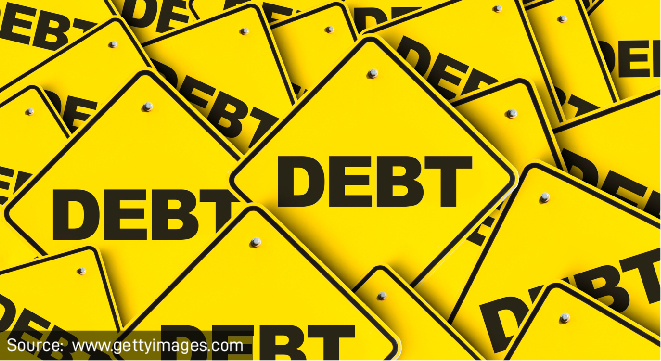The most notable feature of Budget 2022 is National Treasury’s intent to stabilise the government’s debt ratio, as it “saves” a significant portion of its current tax windfall, estimated at R181.9 billion in 2021/22, for this purpose.
The gross loan debt ratio is now expected to peak at 75.1% of GDP in 2024/25. This compares with the peak of 78.1% of GDP in 2025/26 projected in November 2021.
The Treasury’s revised revenue estimates show a cumulative increase in main budget gross tax revenue of R468.5bn from 2021/22 to 2023/24, relative to its projections published in February 2021. Ideally, this bonanza should have been “saved” in its entirety to lower the debt trajectory even further.
Debt sustainability is a pre-condition for eventual sovereign debt rating upgrades, which, all else equal, should lower borrowing costs and free up resources for spending elsewhere.
However, South Africa’s depression-level unemployment rate precludes this.
Additional main budget non-interest spending amounted to R63.1bn in 2021/22, relative to the initial February 2021 projection. And, in 2022/23 and 2023/24 non-interest spending has been lifted by a further cumulative R195.2bn. This implies more than half of the upward revision to revenue over the three years from 2021/22 to 2023/24 is absorbed by additional spending. Thereafter, in 2024/25 non-interest spending is lifted by an additional R87.1bn (relative to the February 2021 projection).
Part of the upward revision reflects the cash gratuity granted to government employees in 2021/22 and 2022/23, which should fall away over the medium term.
However, it is clear South Africa’s pressing socio-economic needs, which cannot be ignored, are translating into higher government spending. As such, the revisions include additional spending of R48.2bn on social welfare interventions and free basic services (mainly social grants spending) in 2022/23. This expenditure category also receives additional allocations of R16.7bn and R22.6bn in 2023/24 and 2024/25, respectively.
Further, given potential additional spending pressures, the Treasury increased unallocated reserves by R25bn and R30bn in 2023/24 and 2024/25 respectively.
Expenditure restraint is the standout risk to debt stabilisation
The main budget deficit decreases to 4.5% of GDP by 2024/25 from -5.5% of GDP in 2021/22, while the main budget primary budget balance (revenue less non-interest spending) turns into a surplus of +0.6% of GDP in 2024/25 from a deficit of -1.3% of GDP in 2021/22. However, this is not sufficient to stabilise the debt ratio over the medium term.
Debt stabilisation is still some way away, and the likely final debt trajectory is subject to a range of risks – both positive and negative, including the extent to which tax administration efficiency improves, the duration of the commodity price boom, potential tax regime changes, which influence tax buoyancy, and any potential proceeds from asset sales.
Over and above these factors, the standout risk relates to planned expenditure restraint. Partly reflecting joblessness, the expenditure track record of recent years is one of slippage. Moreover, whereas wage restraint lies at the heart of South Africa’s fiscal consolidation drive, a formal wage agreement must still be signed.
Overall, it remains a tough task to limit the average annual real increase in consolidated non-interest spending to 0% (1.6% excluding compensation of employees) over the medium term as projected by Treasury.
Government has the right intent
Ultimately, intent is important. Fiscal policy should be designed for long-term sustainability, including alignment of government spending with the underlying potential growth rate of the economy. This implies expenditure restraint when temporary windfalls boost revenue. And it requires economic reform and the alignment of tax policy with the growth objective – that is, broadening of the tax base and designing tax policy so that the incentive to work, save and invest is not reduced.
Budget 2022 makes a concerted effort to meet the first objective, within the constraints of socio-economic spending needs.
As regards the tax regime, Budget 2022 provides a net R5.2bn in tax relief. But the changes to the direct and indirect tax regimes are limited, and Finance Minister Enoch Godongwana indicated during his speech that additional expenditure pressures in future may need to be addressed by tax increases.
Overall, Budget 2022 is a significant improvement on previous projections. It also has the right intent. That said, low potential economic growth and high spending needs constrain Treasury’s ability to show a decisive path to a lower debt ratio over the medium term.
Arthur Kemp is the chief economist at Sanlam Investments.
Disclaimer: The views expressed in this article are those of the writer and are not necessarily shared by Moonstone Information Refinery or its sister companies.




